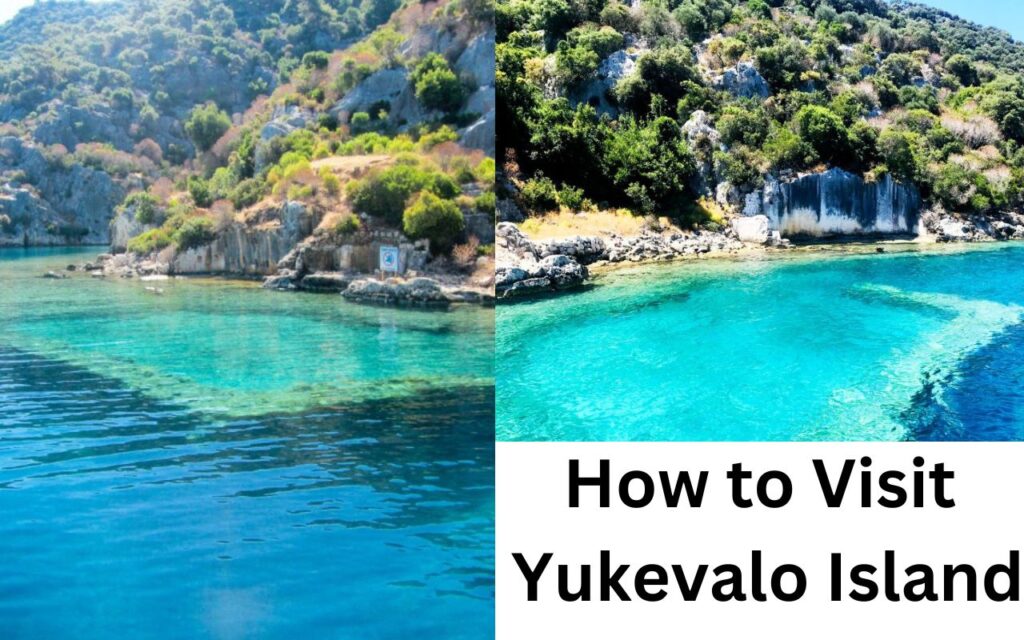Introduction
Nestled in the heart of the South Pacific, Yukevalo Island is a pristine paradise that remains one of the world’s best-kept secrets. With its turquoise lagoons, emerald rainforests, and vibrant Polynesian culture, the island offers an escape from the ordinary. However, its remoteness and limited infrastructure mean that visiting requires meticulous planning. This 2025 guide dives deep into every aspect of your journey, ensuring you’re equipped with the knowledge to explore Yukevalo responsibly and unforgettably.
Getting to Yukevalo Island: Flights, Ferries, and Private Transfers
Reaching Yukevalo Island is an adventure that begins long before you set foot on its shores. As the island lacks an international airport, travelers must first fly to a nearby hub. Nadi International Airport (NAN) in Fiji is the most common gateway, offering daily flights from major cities like Los Angeles, Sydney, and Auckland. Fiji Airways, Air New Zealand, and Qantas provide regular services to Nadi, with flight times ranging from 10 hours (from Sydney) to 14 hours (from Los Angeles). From Nadi, Fiji Airways operates weekly domestic flights to Yukevalo’s compact airstrip, which can accommodate small propeller planes like the ATR 72. These flights depart every Tuesday and Friday at 9:00 AM, with a 90-minute journey over the sparkling Pacific. Fares start at $300 round-trip, but prices spike by 40% during peak seasons (June–August), so booking six months in advance is advisable.
For those who prefer sea travel, ferries depart twice weekly from Port Denarau in Fiji. The MV Island Queen offers a 10-hour voyage departing Mondays and Thursdays at 7:00 AM. Tickets range from 120foreconomyseating(bench−styleseatsonthelowerdeck)to200 for premium lounge access, which includes reclining chairs, meals, and panoramic views from the upper deck. While scenic, the ferry ride can be rough during the wet season (November–April), so pack motion sickness medication if you’re prone to seasickness. Note that ferry schedules are occasionally disrupted by weather, so build flexibility into your itinerary.
Luxury seekers might consider a private yacht charter from Fiji or Tonga. Companies like Pacific Blue Charters offer customizable itineraries, with rates starting at 2,000perdayforacrewedcatamaran.ThisoptionallowsstopsatuninhabitedatollsandremotesnorkelingspotsenroutetoYukevalo.Foramid−rangealternative,sharedyachttrips(around500 per person for a 3-day voyage) can be booked through agencies like Sail South Pacific.
Visa Requirements:
- Yukevalo is part of Fiji’s Outer Islands, so a Fiji tourist visa is required for most nationalities. This can be obtained on arrival for stays up to 4 months for citizens of the US, EU, Australia, and New Zealand.
- Ensure your passport is valid for at least 6 months beyond your travel dates.
Key Tips:
- Confirm baggage allowances: Domestic flights limit checked luggage to 15kg. Excess baggage costs $5/kg.
- Arrive in Fiji a day early to avoid missing connections due to flight delays.
- Download offline maps of Yukevalo via apps like Maps.me, as Wi-Fi is scarce.
Best Time to Visit Yukevalo Island: Weather, Seasons, and Events
Yukevalo’s tropical climate ensures warm weather year-round, but seasonal shifts significantly impact travel experiences.
Dry Season (May–October):
This is the most popular time to visit, with temperatures hovering between 25°C and 30°C (77°F–86°F) and minimal rainfall. Skies are clear, making it ideal for snorkeling, hiking, and photography. However, accommodation prices rise by 30–40%, and popular eco-lodges book out months in advance. Marine life is particularly active during these months, with manta rays frequenting Te Rua Lagoon in August.
Wet Season (November–April):
Characterized by sporadic downpours and higher humidity (averaging 80%), this season transforms the island into a lush, green wonderland. While rain rarely lasts all day, tropical storms can disrupt ferry services and outdoor activities. Travelers during this period enjoy lower prices (up to 50% off peak rates) and fewer crowds, but should monitor weather forecasts for cyclones, which occasionally strike in January–February. This is also the best time for waterfall hikes, as rain swells the island’s cascades.
Cultural Highlights:
Plan your trip around the Yukevalo Heritage Festival (July 12–18, 2025), a vibrant celebration featuring traditional dance performances, canoe races, and handicraft markets. The Kava Harvest Festival in March offers insight into the island’s sacred drink, with rituals led by village chiefs. For a quieter experience, visit during the Tapa Cloth Weaving Workshops held monthly in Tukuvale Village.
Where to Stay: Accommodation Options for Every Budget
Yukevalo’s lodging ranges from rustic beach huts to luxury villas, but options are limited—book early to secure your preferred stay.
Budget-Friendly Stays (20–100/night):
- Manaia Backpackers Hostel: Located in Yukevalo Village, this hostel offers dorm beds (25)andprivaterooms(60) with shared kitchens. Free breakfast (tropical fruit, coconut pancakes) and weekly cultural workshops make it a social hub.
- Tukuvale Homestays: Immerse yourself in local life by staying with a family ($35/night, including meals). Pre-arrange via the Yukevalo Tourism Office. Expect simple rooms with mosquito nets and shared bathrooms.
Mid-Range Retreats (100–300/night):
- Lagoon View Bungalows: These solar-powered beachfront cottages ($150/night) include kayaks, snorkeling gear, and daily breakfast. Perfect for couples, with private verandas facing the lagoon.
- Rainforest Retreat: Nestled in the island’s interior, this eco-lodge ($220/night) offers guided birdwatching tours and farm-to-table dining. The treehouse suites feature outdoor showers and canopy views.
Luxury Escapes ($300+/night):
- Te Moana Resort: Overwater villas ($500/night) with private infinity pools and butler service. Includes complimentary sunset cruises and spa credits. The resort’s marine biologist leads weekly reef conservation tours.
- Vai’ana Private Estate: A secluded cliffside villa ($1,200/night) for groups, featuring a chef, infinity pool, and 360° ocean views. Minimum 3-night stay.
Booking Advice:
- Use local agencies like Yukevalo Travel Co. to access exclusive lodges not listed on global booking platforms.
- Verify eco-certifications; many properties now require proof of sustainability practices (e.g., rainwater harvesting, solar power).
Navigating the Island: Transportation Tips
Yukevalo spans just 12km (7.5 miles) across, but its rugged terrain demands strategic planning.
Scooters & Bicycles:
Rent a scooter (20/day)orbicycle(10/day) from Island Wheels Rentals near the ferry dock. Scooters are ideal for coastal roads, but avoid inland trails after rain—muddy paths can be treacherous. Helmets are mandatory and included in rentals.
Taxis & “Vilis”:
Shared taxis, called vilis, operate on fixed routes between villages (5–15 per ride). For private transfers, hire a driver via your accommodation (approx. $30/hour). Drivers often double as guides, sharing stories about Yukevalo’s history.
Walking & Guided Tours:
Most attractions in Yukevalo Village and Te Rua Lagoon are walkable. For remote sites like Mount Vai’ana, join a 4WD tour ($80/person) with Wild Yukevalo Adventures. Their half-day excursions include stops at hidden waterfalls and traditional marae sites.
Pro Tip: Fuel stations are scarce—fill up at the sole pump in Yukevalo Village before exploring. Carry Fijian dollars (FJD) for payments; credit cards are rarely accepted outside resorts.
Top Attractions: Must-See Sights on Yukevalo Island
Yukevalo’s blend of natural wonders and cultural treasures ensures there’s no shortage of discoveries.
Te Rua Lagoon Marine Sanctuary
A protected area teeming with coral gardens, sea turtles, and parrotfish. Snorkel at high tide for the clearest visibility, or join a guided night snorkel ($45) to witness bioluminescent plankton. The lagoon’s Coral Restoration Project allows visitors to plant coral fragments—ask at the visitor center.
Mount Vai’ana Summit Trail
This moderate 3-hour hike rewards you with 360° views of the island. Start at dawn to avoid midday heat, and hire a local guide ($50) to learn about native flora like the vai’ana orchid. The trailhead is marked by a carved wooden sign near Tukuvale Village.
Ancient Mara’e Temples
Dating back to the 15th century, these stone temples served as ceremonial grounds. Visit with a cultural guide ($30) from the Yukevalo Heritage Center to understand their spiritual significance. Don’t miss the Whispering Stones, a set of volcanic rocks believed to carry messages to ancestors.
Tukuvale Village Cultural Experience
Participate in a kava ceremony, where you’ll drink the traditional Fijian brew and present a sevusevu (gift of kava root) to the chief. Stay for a lovo feast—meat and vegetables cooked in an earth oven. Villagers often demonstrate firewalking, a practice rooted in legend.
Friday Market in Yukevalo Town
Held weekly from 6:00 AM to noon, this market bursts with tropical fruit (try the sweet vuga berries), hand-carved tapa cloth, and pearl jewelry. Arrive early for the best selections, and barter gently—prices are already low (5–20 for most items).
Adventure and Relaxation: Activities for All Travelers
Whether you’re an adrenaline junkie or a serenity seeker, Yukevalo delivers.
For Thrill-Seekers:
- Scuba Diving at Blue Wall Reef: Advanced divers can explore underwater caves and WWII shipwrecks with Aqua Pacific Divers ($150/two-tank dive). The reef’s drop-off plunges 1,000 meters, attracting hammerhead sharks in July.
- Rainforest Ziplining: Soar above the canopy with Sky Yukevalo ($95/person), including a visit to a hidden waterfall. The 800-meter zipline reaches speeds of 60 km/h.
- Deep-Sea Fishing: Charter a boat ($400/half-day) to reel in mahi-mahi and yellowfin tuna. Most charters include gear and a crew member to clean your catch.
For Relaxation:
- Te Moana Spa: Indulge in a coconut oil massage ($120) in an open-air cabana overlooking the lagoon. The Fijian Bobo treatment uses heated banana leaves to soothe muscles.
- Sunset Sailing: Book a private catamaran cruise ($250/2 hours) with champagne and Polynesian canapés. Opt for a traditional drua (sailing canoe) for a more authentic experience.
- Hot Springs Soak: Natural geothermal pools near Mount Vai’ana offer therapeutic soaks—free and open to all. Locals believe the mineral-rich waters cure arthritis.
Savoring Local Flavors: Yukevalo’s Cuisine and Dining Spots
Yukevalo’s food scene blends Fijian, Tongan, and Polynesian influences. Don’t miss these culinary highlights:
Must-Try Dishes:
- Kokoda: Raw mahi-mahi cured in lime juice and coconut milk, served in a coconut shell.
- Palusami: Taro leaves stuffed with corned beef and coconut cream, baked in banana leaves.
- Cassava Cake: A sweet, dense dessert made from grated cassava and caramelized coconut.
Top Restaurants:
- Tama’s Beach Grill: A casual spot for grilled lobster (25)and∗kokoda∗(12). Open-air seating with sand floors.
- Te Vai Fine Dining: Reserve ahead for their seven-course tasting menu ($85) featuring locally foraged ingredients like wild ginger and sea grapes.
- Umu Café: Budget-friendly breakfasts ($8) with tropical fruit platters and freshly baked rotis (flatbread).
Food Tours & Cooking Classes:
Join Yukevalo Flavors (65/person)foramarket−to−tabletour,includingavisittoavanillabeanfarm.At∗MamaLiti’sKitchen∗,learntoprepare∗lovo∗feastsusingancestraltechniques(45/class).
Cultural Etiquette: Respecting Local Traditions
Respect is paramount in Yukevalo’s tight-knit communities:
- Dress Code: Cover shoulders and knees when visiting villages. Swimwear is acceptable only at resorts.
- Kava Ceremonies: Clap once before accepting the coconut shell bowl, and drink the entire serving in one gulp.
- Gift-Giving: Present a sevusevu (kava root bundle) to village chiefs—available at the Friday Market for $10.
Language Tips:
- Bula = Hello
- Vinaka = Thank you
- Moce = Goodbye
Avoid touching anyone’s head (considered sacred) and ask permission before photographing locals.
Packing Essentials: What to Bring for Your Trip
- Clothing: Lightweight, breathable fabrics (linen, cotton), a rain jacket, and sturdy hiking shoes.
- Gear: Reef-safe sunscreen (regular sunscreen is banned), a reusable water bottle, and a waterproof phone case.
- Documents: Printed copies of ferry/flight tickets, as Wi-Fi is sporadic.
Health Kit:
- Mosquito repellent with DEET (dengue fever is rare but possible).
- Rehydration salts (humidity can cause dehydration).
- Basic first-aid supplies; the island’s clinic only handles minor injuries.
Traveling Sustainably: Protecting Yukevalo’s Ecosystem
Yukevalo prioritizes eco-tourism. Follow these guidelines:
- Use biodegradable sunscreen to protect coral reefs. Brands like Stream2Sea are sold at island stores.
- Support local businesses by booking tours through community cooperatives.
- Avoid single-use plastics; refill water at designated stations (free at the Yukevalo Tourism Office).
In 2025, a new Visitor Conservation Fee ($20) will fund marine preservation projects—payable upon arrival at the airport or ferry dock.
Final Thoughts
Yukevalo Island offers a rare blend of natural beauty and cultural richness, but its remoteness demands thoughtful planning. By following this guide, you’ll navigate logistics with ease, immerse yourself in local traditions, and leave a positive impact on this fragile ecosystem. Whether you’re kayaking through bioluminescent bays or sharing stories with villagers under the stars, Yukevalo promises a journey you’ll cherish forever. Vinaka vakalevu! (Thank you very much!)


